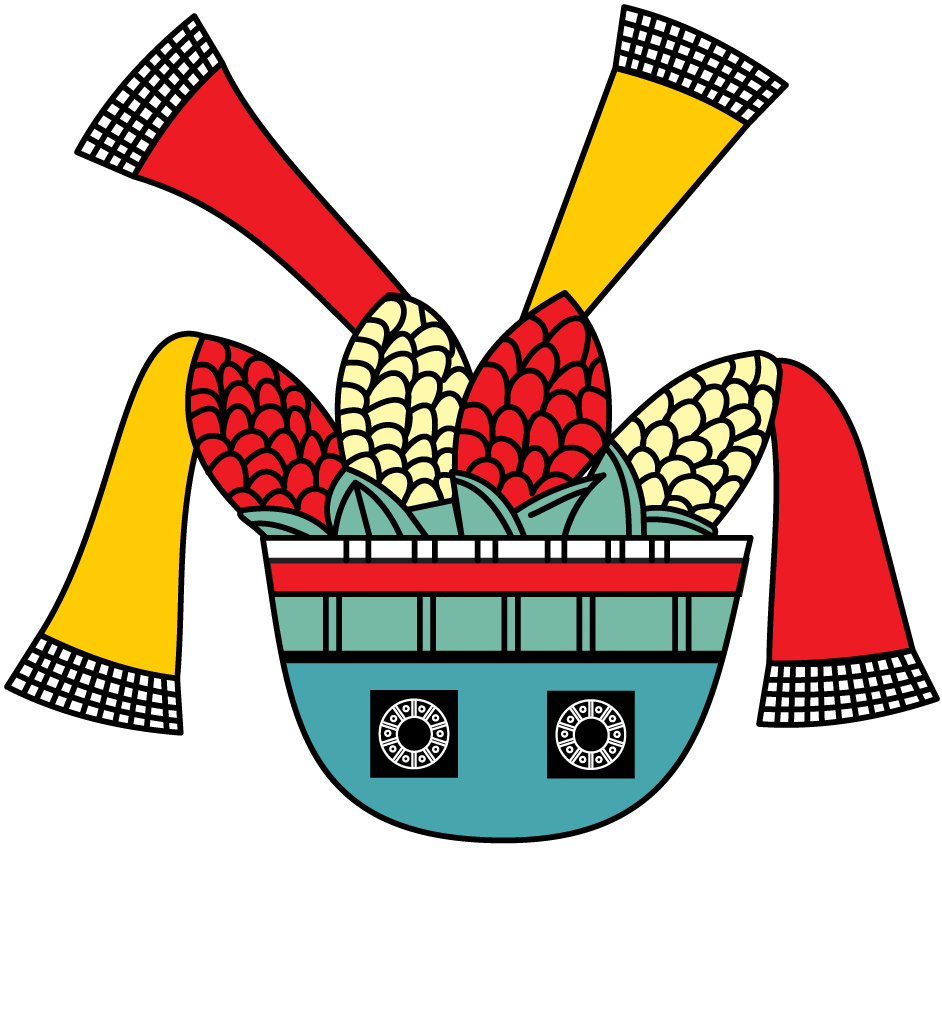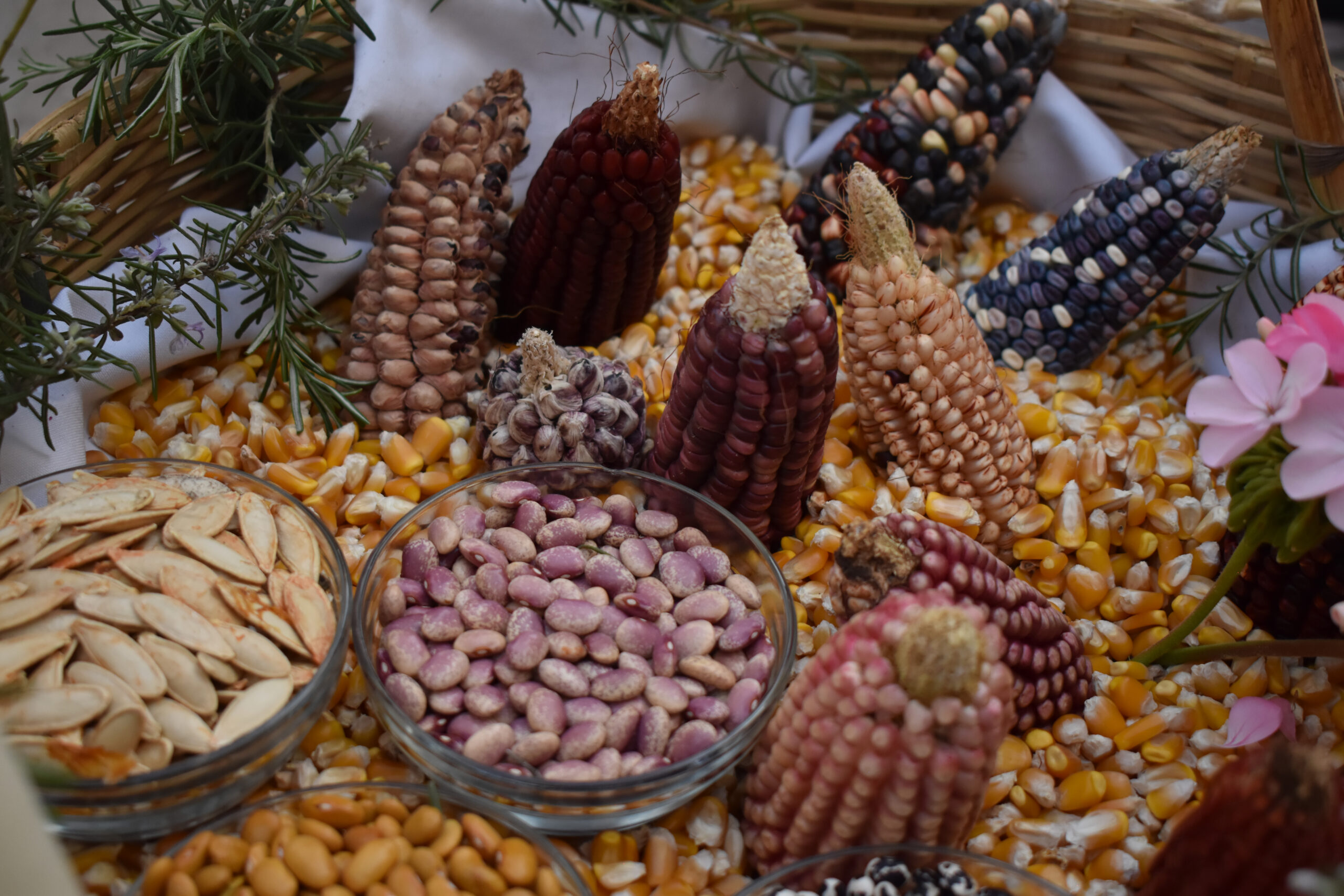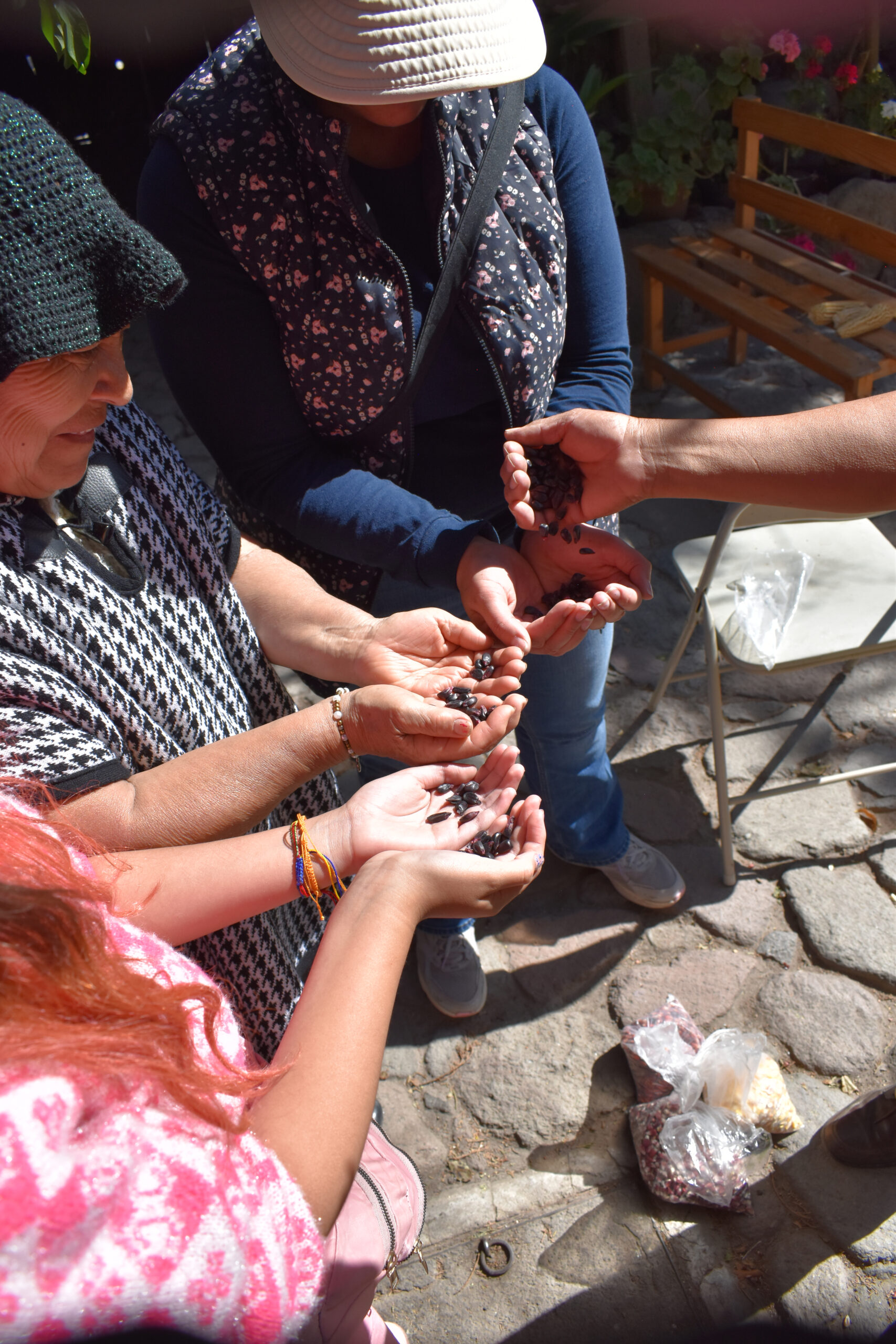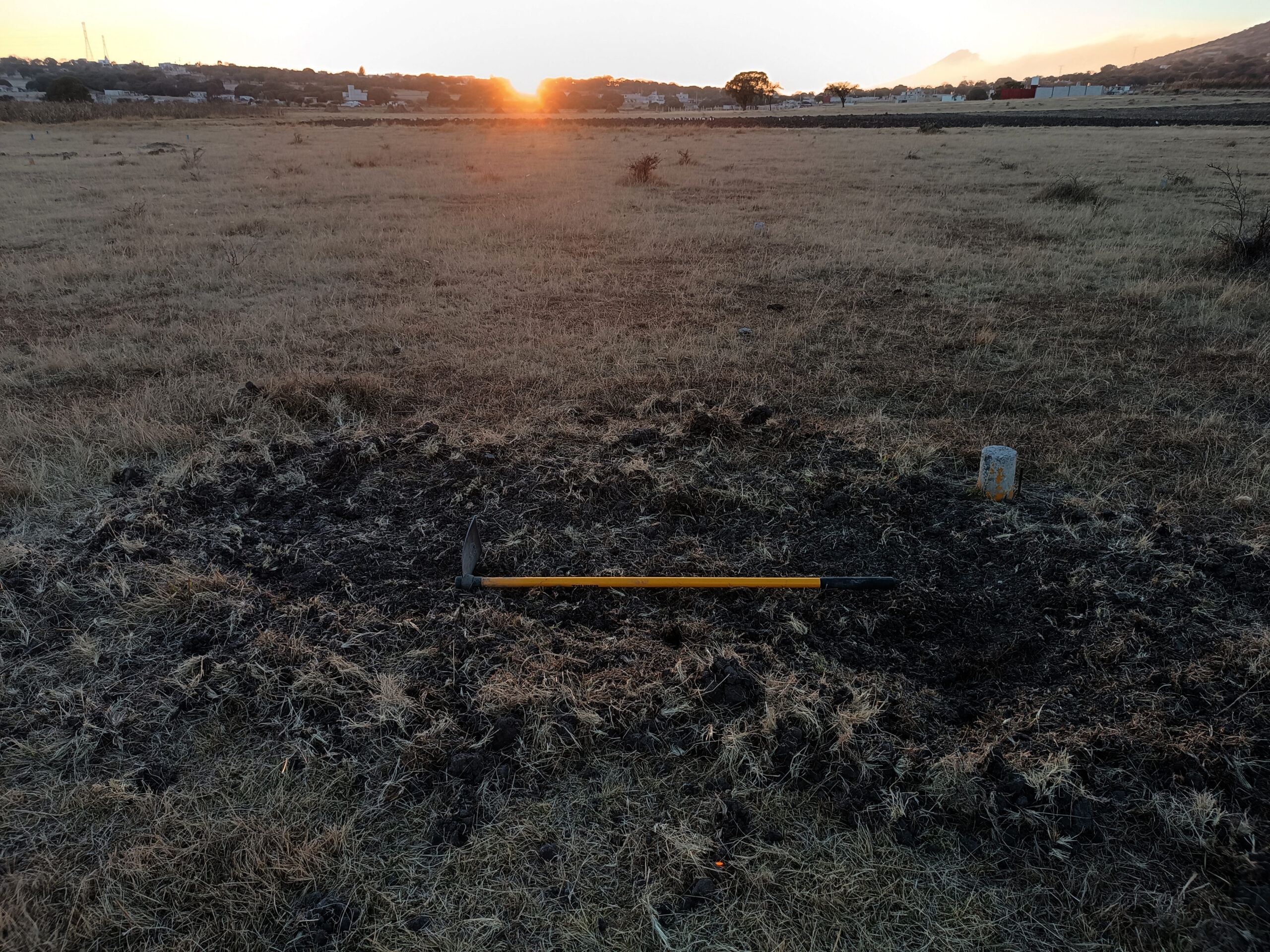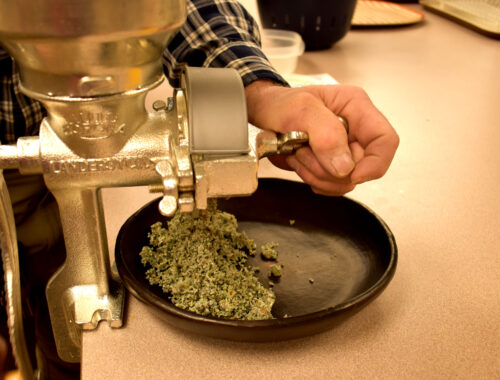Blog
Corn “Morado”
This is a story of corn and roots and how my family, a planting family, has embarked in the journey of making Maiz morado de Ixtenco, Tlaxcala,Mexico (purple corn from Ixtenco, Tlaxcala, Mexico) part of our lives. This amazing heritage corn came to us the same way corn was developed and has migrated throughout the Americas and the world: through the rough, generous, loving hands of corn breeders that see the rough, generous, and loving value of these precious seeds.
San Juan Ixtenco is a small, rural town in central Mexico, next to the magnificent Matlalcueye (Malinche volcano) on the west valley of Tlaxcala. It is a place of Otomi roots and a vibrant corn culture. Families in Ixtenco hold their heritage seeds close to their hearts; some have been the proud stewards of the maiz ajo (pod corn) and morado landraces for generations. The whole town gathers yearly for a seed blessing ceremony in which the seeds that will be planted that season are placed in baskets decorated with flowers, along with figurines of baby Jesus, representing love, abundance, and what is sacred in the home. The people of Ixtenco also organize several events throughout the year to share their traditions, food, and knowledge with the public and to promote corn culture.
Through our work with Rooting Though Corn, Planting families project in Mexico, we had the opportunity to meet Cornelio Hernandez Rojas, a farmer, anthropologist and heritage corn advocate native to Ixtenco. He and his wife and traditional cook, Mrs. Maria Teresa Solis, welcomed us into their home, shared some atole morado and tamales with us, and took us to the fields where the family grows several varieties of corn and other products of the milpa. We were introduced to maiz morado, a corn variety bred and improved by Cornelio, as well as many other colorful and interesting varieties displayed in his home.
After several other exchanges with Cornelio and his family, always tremendous learning experiences, I finally worked up the courage to ask him for some seeds for the sustenance of my family and other planting families in the project. His response was heartwarming. He not only shared some white, yellow, pink, and blue corn with us, he generously shared some morado seeds. We received the seeds with great joy and expectation, from his loving hands into the hands of three generations in my family: my daughter, my mother-in-law, and my own. A seed is a gift of creativity, a gift of endurance, a gift of livelihood and accountability. And here started morado’s journey into our home and land in Santo Tomas Chautla, forty minutes west of the city of Puebla, Mexico, and the beginning of the Mixteca poblana.
Morado was well received in a blessing ceremony, as is our tradition to give thanks to the Earth and ask permission to work the land. As we acknowledged the soil, the underground waters, the rain, the sun, the wind, the plants and animals in the space, we also recognized our limitations as humans and our part in the life and death cycle of all living beings. With each ceremony, we recommit to learning and giving back, and to caring for the land as part of our family. So, after all these great intentions, what could go wrong? Right?

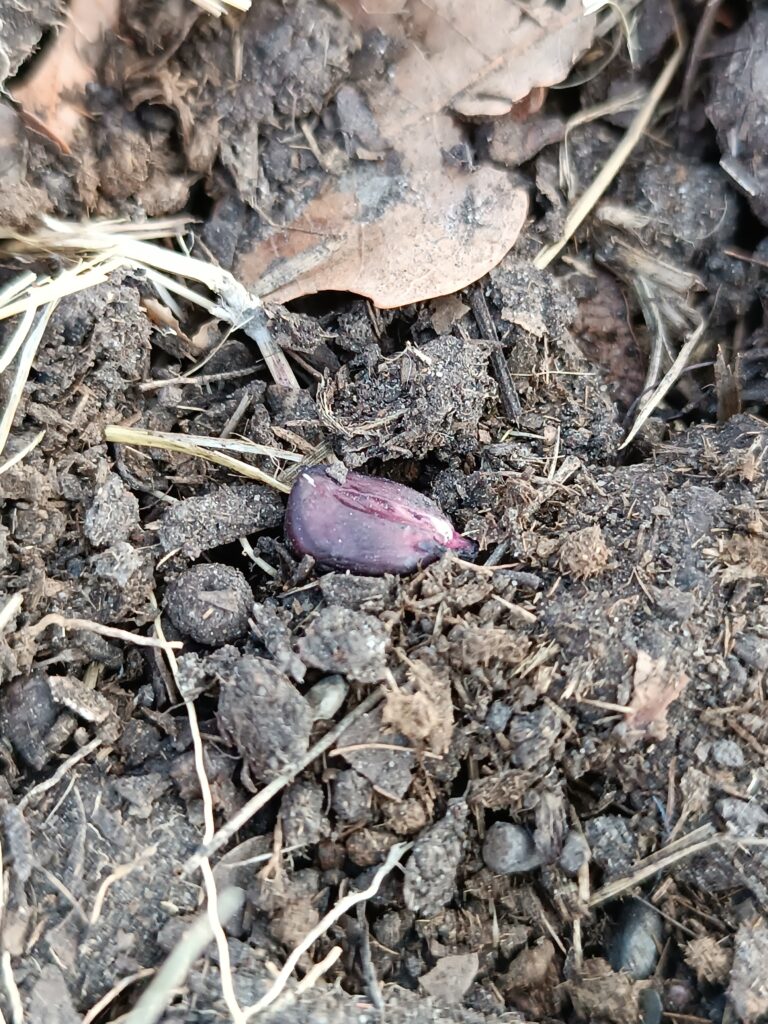
My husband, Gerardo and I had previously prepared the land by fencing the plot, turning the soil, amending it with compost and cow manure, and creating the furrows. This would be the first time in at least 13 years that the land would be used for planting anything. The soil was very compacted, and we prepared the beds using only hand tools -no fossil fuels here. We planted the first round of morados in late March, expecting the rains to be around the corner. First challenge: climate change is real, and it is happening now. The rain did not come. There was a prolonged drought that shifted the entire rainy season about 3 months forward. Corn is a warrior seed, and it sprouted beautifully, nevertheless. Without an irrigation system, we tried many water conservation techniques; but the plants were thin and thirsty, and some even wilted under the spicy Puebla sun.
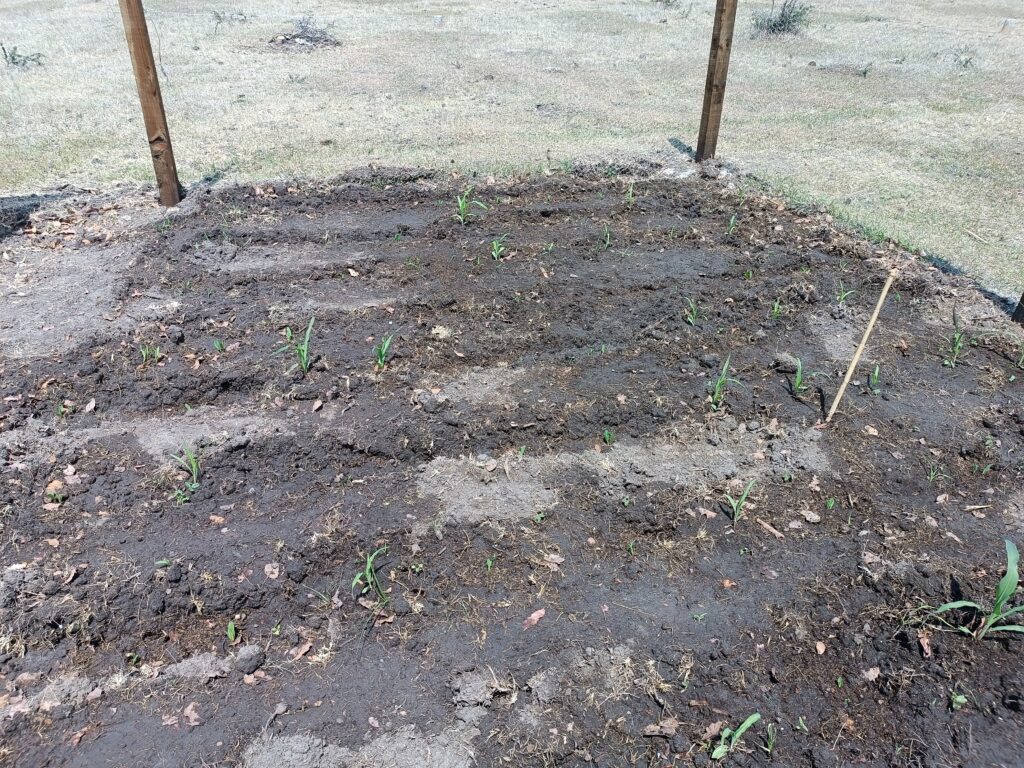
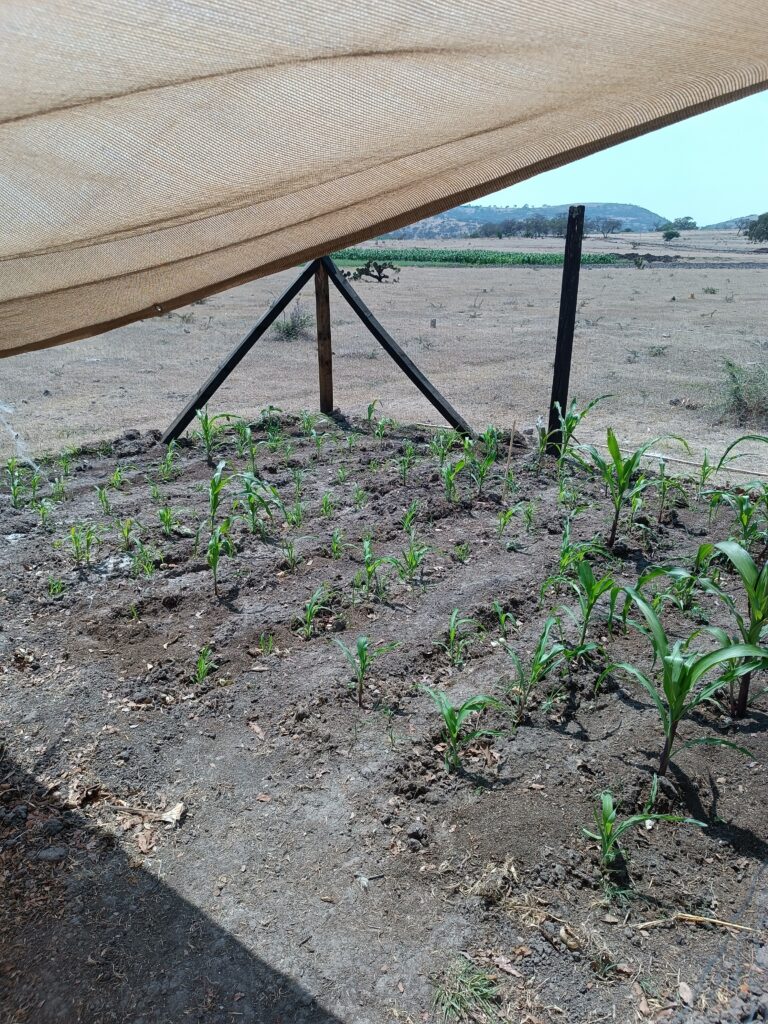
We replanted to fill in the gaps in mid-April, innocently thinking the rains were just a tad late, but little did we know we were just setting up for challenge number two. We established a watering system that involved hauling water in a wheelbarrow and irrigating the furrows early in the morning or near the evening every three days. Our water source is a well about 20 meters away, and our off-grid plot made pulling water from the well and watering the plots a very labor-intensive task. Fortunately, this was enough for morado, and it grew strong and thick. We also noticed the soil required a lot more organic matter, so we added compost from our home and cow manure frequently. Three times during the season, we gathered soil around each plant to prevent them from falling over during the windstorms. Weeding and looking for and removing (and eating!) huitlacoche were also frequent tasks.
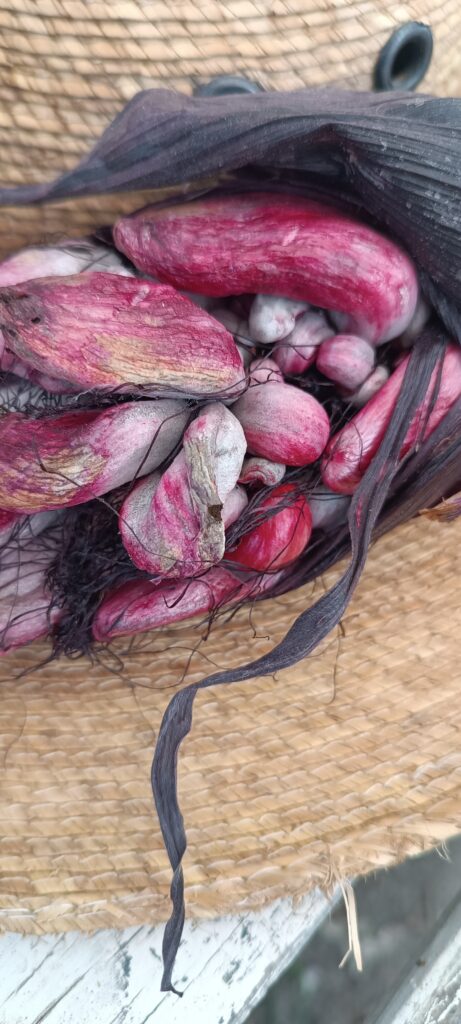

Morado’s green and purple leaves were a delight to the eye. However, ants and grasshoppers also thought it was delightful. The issue of dealing with devastating pests like ants and grasshoppers is an ongoing challenge and threat to everything we plant. We do not want to use harsh chemicals that will harm the ecosystem, but we also want our crops to bear fruit and produce. We saw trails of ants climbing up the corn stalks, biting the leaves and even taking the flowers from the tassels at some point. A few plants suffered major damage from this, but corn is such a resilient plant that even the damaged stalk set ears and produced corn. Meanwhile the grasshoppers ate the tomatillos, squash, navy beans, and any volunteer plants that had decided to grow in the milpa.
When harvested as sweet corn, morado leaves its bold color on the hands, as if one had cut up beets. It is amazing to see dark purple silks, dark purple husks, stalks and even some dark purple leaves on the plant. In this sweet, soft stage Morado corn is simply delicious. We had some boiled and others on the grill. We are currently drying down most of it to later grind, nixtamalize and turn into masa. We may also try making atole agrio, a traditional warm drink made from fermented morado corn that Mrs. Solis shared with us. We saved the wide husks for tamales, the cobs for making a shucker, and the stalks to use as compost and fencing.

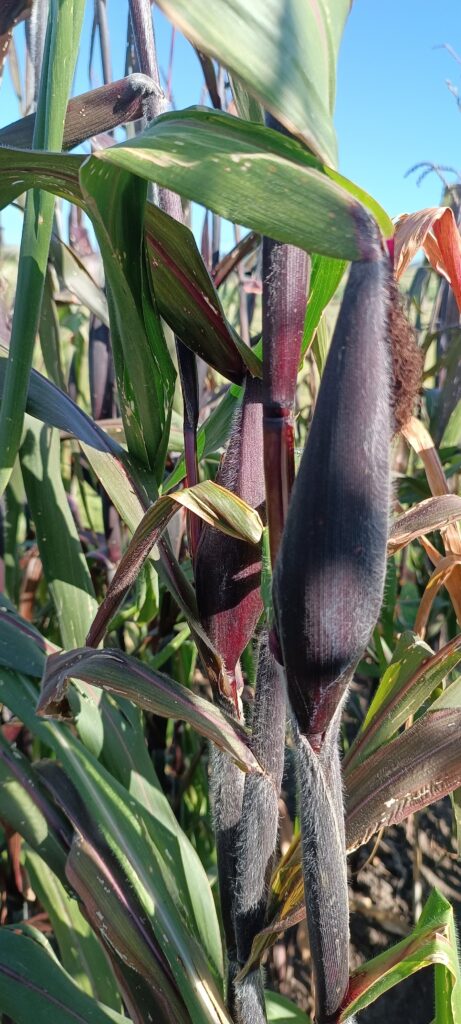

We harvested a significant amount of morado corn close to being mature and a few dry ears at the end of August. Ideally corn should dry down and fully mature on the plant, but after opening a few samples we noticed most were infested with cornworm at the tip, and if we left them, we would be harvesting bare cobs at the end of the season. We know by experience that some Bacilus thuringiensis, an eco-friendly bacteria sprayed on the silks and when the corn is forming is very effective against cornworm; but we wanted to observe this first planting without intervention. We will definitely intervene next season… with Bt and probably some chickens to eat the insects. We are so grateful for the advice and valuable insight received from neighbors and planting families in the area. It was so meaningful to share common challenges and feel supported by the true experts in the matter.



Morado corn has taught us many things in this season of many firsts. We will plant it again and again to keep learning, because stewarding heritage seeds is fundamental to our survival as humans on this earth, to food sovereignty, and to creating community. Just like our beloved Avati and Bofo corn varieties, that were entrusted to us and we have harvested for several years, Morado is now rooted in our hearts and we hope stays with us and travels where we go, spreading its color and seeds of hope to many planting families.

